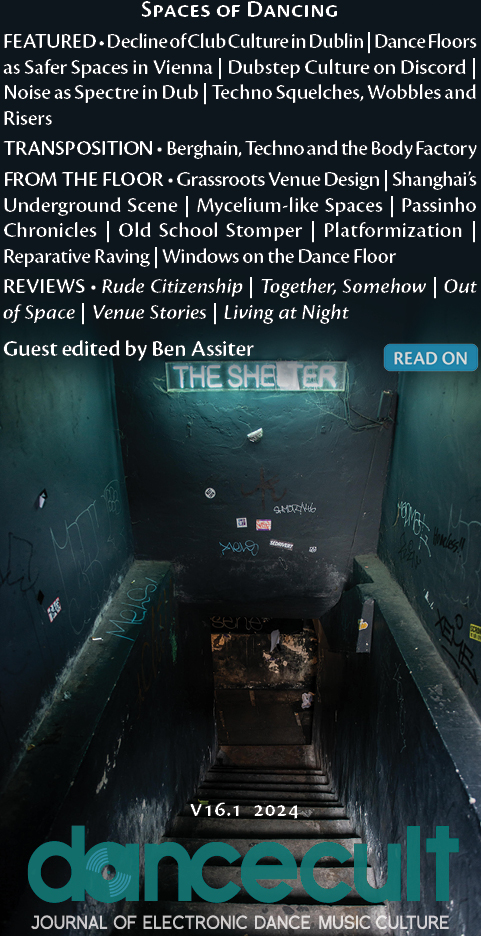Squelches, Wobbles and Risers
Continuous Processes and Subgenres in Electronic Dance Music
DOI:
https://doi.org/10.12801/1947-5403.2024.16.01.06Abstract
EDM is notorious for having copious genres and subgenres. There are many facets of EDM genre distinctions, but this article focuses on one musical aspect: the utilization of “continuous processes” such as crescendos, glissandi and filter sweeps of various lengths (Smith 2021). Some continuous processes signify belonging to certain subgenres. For example, acid house is known for a “squelching” sound, dubstep is known for its “wobble bass” and it is common to hear conversations about which subgenres have the most intense “risers”. In general, continuous processes are used more prominently in subgenres that are more intense, psychedelic and electronic than others. The article’s findings are based on analysis of production guides and fan discourse, as well as the author’s fieldwork and interviews with producers. Three analytical case studies are presented, comparing the use of continuous processes in multiple versions of a work (the original mix and remixes) from different subgenres.
Downloads
Published
Issue
Section
License
Authors who publish with this journal agree to the following terms:- Authors retain copyright and grant the journal right of first publication with the work simultaneously licensed under a Creative Commons Attribution-Noncommercial-Share Alike License that allows others to share the work with an acknowledgement of the work's authorship and initial publication in this journal.
- Authors are able to enter into separate, additional contractual arrangements for the non-exclusive distribution of the journal's published version of the work (e.g. post it to an institutional repository or publish it in a book), with an acknowledgement of its initial publication in this journal. Such derivate works or subsequent publications must happen no less than one calendar year after the initial publication date in Dancecult.
- Authors are permitted and encouraged to post their work online (e.g. in institutional repositories or on their website) prior to and during the submission process, as it can lead to productive exchanges, as well as earlier and greater citation of published work (See The Effect of Open Access).






